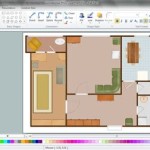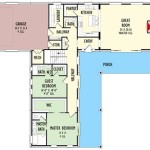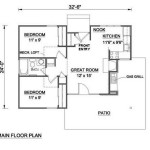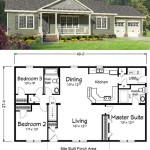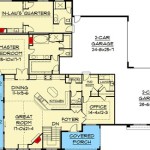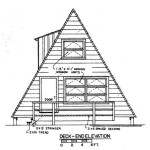How to Design Floor Plans
Designing floor plans is a crucial step in the architectural design process, as it establishes the functional layout and spatial relationships within a building. A well-designed floor plan can enhance the overall functionality, aesthetics, and livability of a space.
To create effective floor plans, consider the following steps:
1. Establish the Functional Requirements
Before embarking on the design process, determine the functional requirements of the space. This includes identifying the types of spaces needed (e.g., bedrooms, kitchen, living room), their approximate sizes, and any specific requirements (e.g., accessibility features, storage solutions).
2. Explore Preliminary Layouts
Sketch out several preliminary layouts to explore different functional arrangements. Experiment with the placement of rooms, circulation paths, and spatial relationships to find a layout that meets the functional requirements while maximizing space efficiency and flow.
3. Determine Room Dimensions and Proportions
Once you have a preliminary layout, determine the dimensions and proportions of each room. Consider standard furniture sizes, circulation clearances, and natural light requirements to create spaces that are both functional and aesthetically pleasing.
4. Establish Circulation Paths
Circulation paths connect different rooms and areas within a building. Plan for efficient and comfortable circulation by considering the width of corridors, the placement of doorways, and the flow of traffic.
5. Integrate Natural Light and Ventilation
Natural light and ventilation are essential for a healthy and comfortable living environment. Incorporate windows, skylights, and other sources of natural light into your design to maximize daylight exposure. Plan for cross-ventilation to promote fresh air and reduce energy consumption.
6. Consider Storage Solutions
Adequate storage is crucial for maintaining a well-organized and clutter-free space. Plan for built-in cabinets, closets, shelves, and other storage solutions to accommodate various items and keep the space functional.
7. Review and Revise
Once you have developed a draft floor plan, review it carefully to identify areas for improvement. Consider the functionality, aesthetics, and overall flow of the space. Seek feedback from other professionals (e.g., architects, interior designers) to gain fresh perspectives and insights.
Additional Tips:
- Use scale to accurately represent the dimensions and relationships between elements.
- Consider the placement of furniture and fixtures to ensure adequate space for movement.
- Pay attention to the orientation of the building in relation to the sun and prevailing winds.
- Collaborate with structural engineers to ensure the structural integrity and feasibility of the design.
- Stay up-to-date with building codes and regulations to ensure compliance.
By following these steps and incorporating the tips provided, you can create functional, aesthetically pleasing, and livable floor plans that meet the specific requirements of your project.

House Plans How To Design Your Home Plan

Floor Plan Creator And Designer Free Easy App

Floor Plans Types Symbols Examples

Floor Plan Creator And Designer Free Easy App

Floor Plans How To Design The Perfect Layout Cherished Bliss

Floor Plans Learn How To Design And Plan

Small House Design 2024001 Pinoy Eplans Floor Plans

Tips For Selecting The Right Floor Plan Your Home Sater Design Collection

House Plans How To Design Your Home Plan

Draw Floor Plans Create Professional

